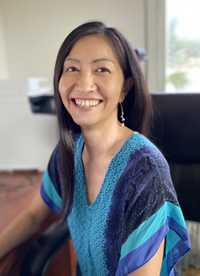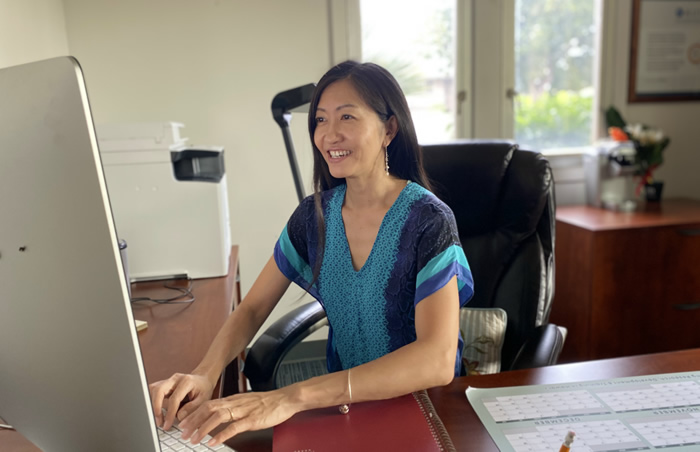
The switch to remote learning for school-aged children sounded immediate and persistent alarms both for parents charged with carrying the educational load and teachers scrambling to connect with students online. For researchers like Kiriko Takahashi (C99, GC01), the change spotlighted the inequities and opportunities that virtual schooling and technology present for children with disabilities.
Takahashi is the director of the Center on Disability Studies in the College of Education at Honolulu’s University of Hawai’i Mänoa and serves on the Hawai’i State Council on Developmental Disabilities. The state’s unique topography, size, and diversity raised altogether different challenges for outreach and access from those faced on the mainland.
“Because Hawai’i is so small, we have very limited space in terms of housing, so people live in very crowded homes, and most people have more than one job,” she says. This can make it difficult to find a quiet space for distance learning, and intergenerational households may involve a lot of competition for computers and tablets—not to mention spotty internet access in remote areas.
“In Hawai’i, for the students with disabilities, absenteeism went up by about nine percent during the pandemic,” she says. “In the 2020–21 school year, 32 percent of students with disabilities were absent, and the state reported its overall number for absenteeism was 21 percent. Students with disabilities each have an individualized education plan, so they might not have been able to deploy those during this time.”
Yet amid those immense challenges, a Maui high school principal told Takahashi that neurodiverse students who could interact with their teachers one-on-one remotely fared much better than in traditional classroom settings. Some were even able to receive interventions at school while their neurotypical counterparts remained at home.
“But if you think about it, that support will be taken away again once everybody goes back, so it’s not fair,” she says. “Those children were finally able to learn in the way they do best.”

Takahashi also researches assistive technologies, devices and apps that support people with disabilities. As she notes, the pandemic made services readily available that adults in this community have long championed.
“For instance, being able to attend meetings and venues virtually or have options to order food from various restaurants or maybe being able to work from home or with flexible hours,” she says. “These became available because everybody else needed them. And it is very nice, but it’s also frustrating that for a great number of years, this is what the disability community has fought for. I now have a mission: I want to make sure that what’s provided or what’s available as an option now can continue for people with disabilities.”
Takahashi compares this moment to the fight for curb cuts in the 1960s. The movement was spearheaded by wheelchair users, but the convenience of sloped street access benefits all. Now that we are enjoying the conveniences afforded by pandemic-era technology, she doesn’t want its original advocates to be forgotten.
“I do want people to continue thinking about those with disabilities moving forward,” she says, “and to ensure that the students with disabilities are included in the conversation about how they learn best.”
The Center on Disability Studies is hosting this winter the Pacific Rim International Conference on Disability and Diversity.
